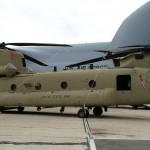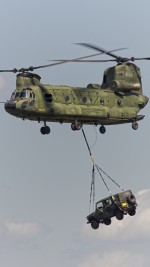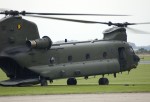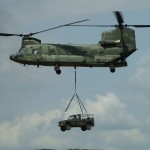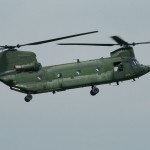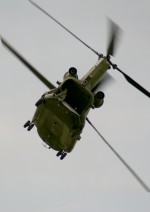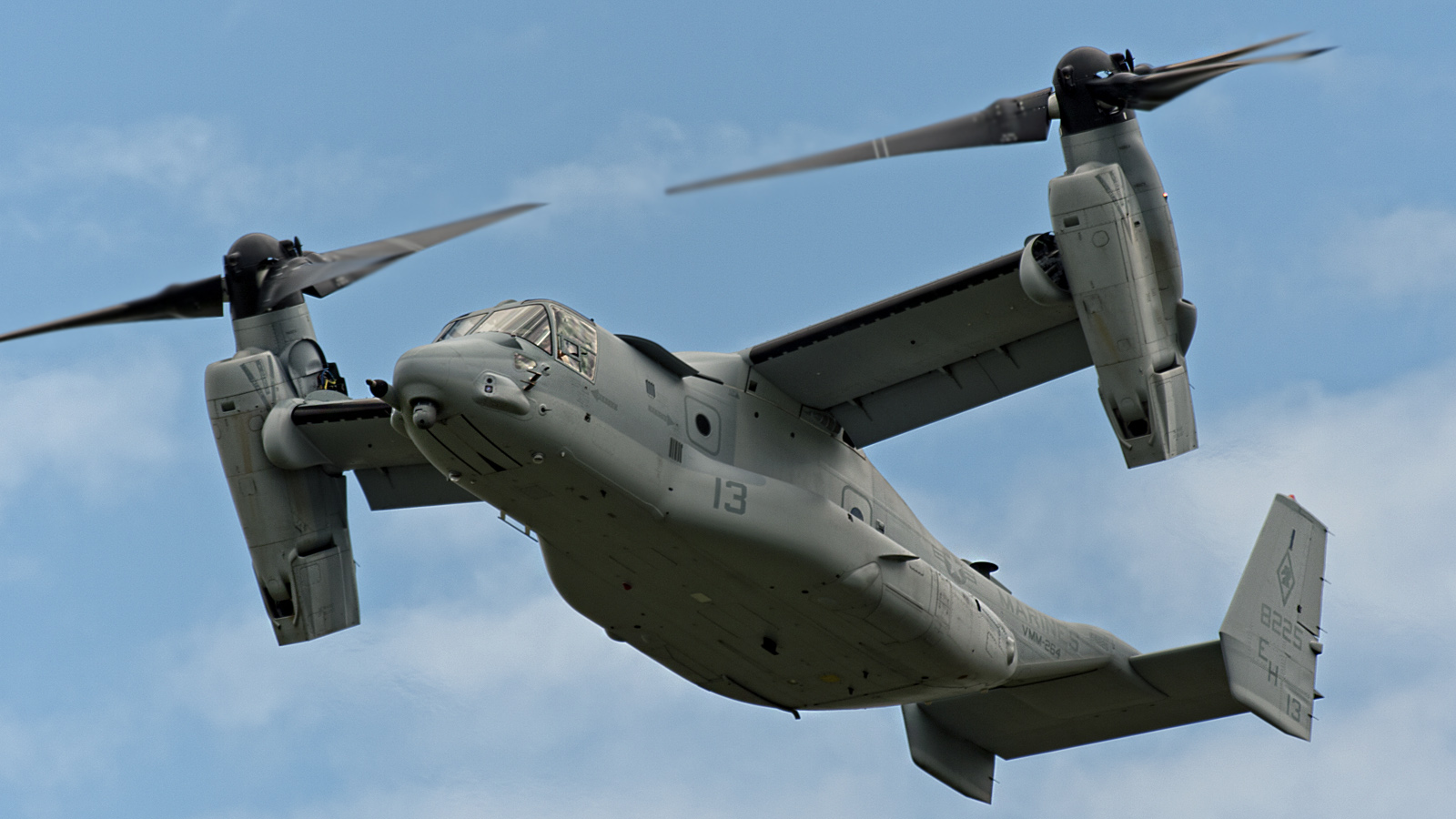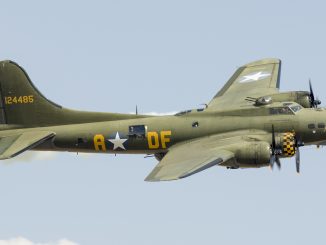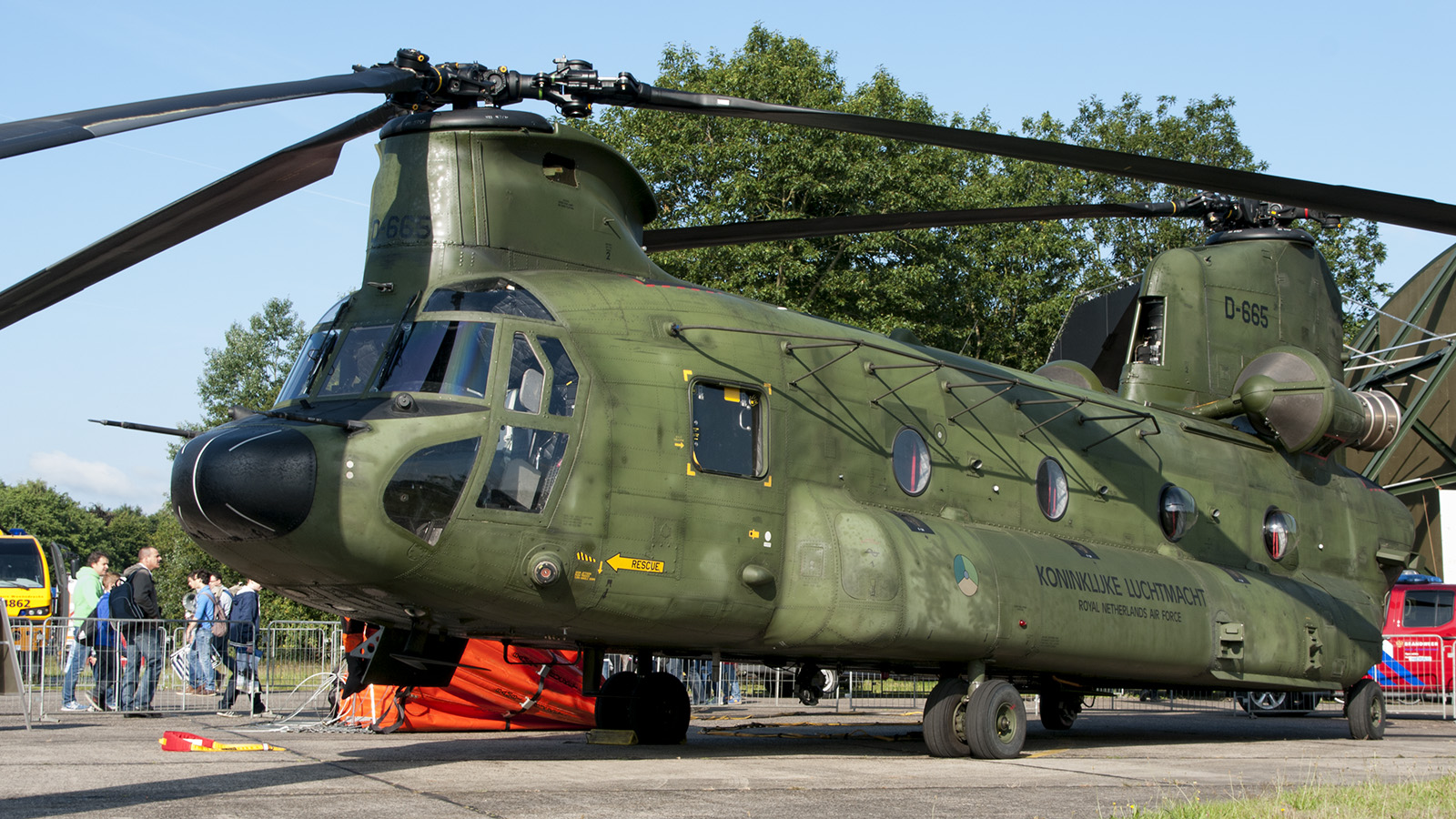
The Boeing CH-47 Chinook is a twin-engine, tandem rotor heavy-lift helicopter, designed for transportation of cargo, troops, and weapons during day, night, visual, and instrument conditions. The Chinook has served as the prime mover for the US Army and other military forces for decades.
Developing nation: United States of America.
Manufacturer/designer: Boeing Vertol.
Number built: >1,200.
Type aircraft: Heavy-lift helicopter
First flight: 21 September 1961.
State: in service.
Primary user: US Army.
Development of the medium lift Boeing Vertol (models 114 and 414) CH-47 Series Chinook began in late 1956, when the Department of the Army announced plans to replace the H-37 helicopter, which was powered by piston-driven engines, with a new, turbine-powered aircraft.
The effectiveness of the Chinook has been continually upgraded by successive product improvements, the CH-47A, CH-47B, CH-47C, CH-47D and CH-47F. Continuous product improvements have more than doubled the Chinook’s lift capacity since its inception. The amount of load a cargo helicopter can carry depends on the model, the fuel on board, the distance to be flown, and atmospheric conditions. A total of 472 CH-47A, B, and C model Chinooks were converted to CH-47D’s. Current versions of the CH-47 Chinook are being produced under license in Italy and Japan in addition to the CH-47D and MH-47E being produced in the United States. User countries include Australia, Egypt, Greece, Iran, Italy, Japan, Morocco, Netherlands, Singapore, South Korea, Spain, Thailand, Turkey, UK, Canada and USA.
CH-47A
CH-47A Chinook was powered initially by Lycoming T55-L-5 engines rated at 2,200 horsepower (1,640 kW) but then replaced by the T55-L-7 rated at 2,650 hp (1,980 kW) engines or T55-L-7C engines rated at 2,850 hp (2,130 kW). Initial delivery of the CH-47A Chinook to the US Army was in August 1962. A total of 349 were built
CH-47B
The B model introduced the Lycoming T55-L7C engine, a beefed up airframe. Nonsymmetrical rotor blades, and the blunted aft pylon for better stability. Boeing began delivering the CH-47B in May of 1967 and eventually produced a total of 108 B models before production shifted to the CH-47C.
CH-47C
Starting in 1969, when CH-47 C-model helicopters (with T55-L-7C engines) were converted to the full “C” model by incorporating T55-L-II engines, variations in engine and rotor shaft torque were observed. The CH-47C has only a single cargo hook below the center of the aircraft. The C model boasted an increased gross weight to 46,000 pounds, increased fuel capacity, the Lycoming T55-L11 engine developing 3750 shp, and addition structural improvements. The first C model flew in late 1967.
CH-47D
The CH-47D was the result of June 1976 contract for a modernized Chinook. The Army recognized that that the Chinook fleet was rapidly reaching the end of its useful life and signed a contract with Boeing to significantly improve and update the CH-47. Three airframes, CH-47A, CH-47B, and a CH-47C, were stripped down to their basic airframes and then rebuilt with improved systems to provide three CH-47D prototypes. Improvements included upgraded power plants, rotor transmissions, integral lubrication and cooling for the transmission systems, and fiberglass rotor blades. Other improvements included a redesigned cockpit to reduce pilot workload, redundant and improved electrical systems, modularized hydraulic systems, an advanced flight control system, and improved avionics. The Chinook has two tandem three-bladed counter-rotating fiberglass rotors. The CH-47D is powered by two Allied Signal Engines T55-L-712 3750 shp turboshaft engines and has a maximun speed of 163 mph (142 knots). The CH-47D was rolled-out in March 1979. The CH-47D carrys twice the load of a CH-47A and has improved performance. The CH-47D can operate at night and in nearly all weather conditions. The CH-47D is equipped with an air-to-air refueling probe. The Chinook can accommodate a wide variety of internal payloads, including vehicles, artillery pieces, 33 to 44 troops, or 24 litters plus two medical attendants. The Chinook can be equipped with two door mounting M60D 7.62mm machine guns on the M24 armament subsystem and a ramp mounting M60D using the M41 armament subsystem. The “D” model can carry up to 26,000 pounds externally. The CH-47D has three cargo hooks: a center (main) hook and two additional hooks fore and aft of the main hook.
CH-47F
The CH-47F, an upgraded D model, first flew in 2001. The first production model was rolled out on June 15, 2006 at the Boeing facility in Ridley Park, Pennsylvania, and had its maiden flight on October 23, 2006.[ The new CH-47F helicopters will have a much enhanced self-protection capability over earlier CH-47D, including advanced anti-missile protection systems, radar and laser warning systems, ballistic protection, self-defence machine guns and advanced electro-optical and infra-red sensors to detect potential threats and assist aircrew in operating in reduced visibility conditions. The Chinook will provide the ground forces with the ability to reduce the reliance on ground routes where threats are high. As evidenced in Afghanistan, the capability of the Chinook to maximize the effectiveness of troops while reducing the threat to them is invaluable.
- With the extended range fuel tanks, they will have more than twice the range of the older Chinooks.
- To defeat anti-aircraft missiles, the new Chinooks will be equipped with a laser-based active missile counter-measure system, as well as a chaff and flare dispensing system.
- A radar and laser warning system will alert the crew if they are being targeted, and a full armour kit will provide crew and passengers with ballistic protection from small arms fire.
- The Chinook will be equipped with three defensive machine guns: two forward door guns and one on the aft ramp.
- A state-of-the-art Electro-Optic/Infra-Red sensor will allow the helicopter to operate effectively in very low light or reduced visibility conditions.
MH-47D
The MH-47D variant was developed for special forces operations and has in-flight refueling capability, a fast-rope rappelling system and other upgrades.
MH-47E
The MH-47E has similar capabilities as the MH-47D, but includes an increased fuel capacity similar to the CH-47SD and terrain following/terrain avoidance radar.
MH-47G
The MH-47G Special Operations Aviation (SOA) version is currently being delivered to the US Army. It is similar to the MH-47E, but features a more sophisticated avionics including a digital Common Avionics Architecture System (CAAS). The CAAS is common glass cockpit used by different helicopters such as MH-60K/Ls, CH-53E/Ks, and ARH-70As.
HH-47
HH-47, a new variant of the Chinook based on the MH-47G, was selected by the US Air Force as the winner of the Combat Search and Rescue (CSAR-X) competition.
CH-47J
The CH-47J is a medium-transport helicopter for the Japan Ground Self Defence Force, and the Japan Air Self Defence Force built by Kawasaki.
Operators
- Austrlia
Canada
Egypt
Greece
Iran
Italy
Japan
Libya
Morocco
Netherlands
Republic of China (Taiwan)
Singapore
South Korea
Spain
Thailand
Turkey 14 CH-47s requested
United Kingdom
United Arab Emirates
United States
Vietnam captured ex-VNAF Chinook
General characteristics CH-47D
- Crew: 3 (pilot, copilot, flight engineer)
- Capacity:
- 33-55 troops or
- 24 litters and 3 attendants or
- 28,000 lb (12,700 kg) cargo
- Length: 30.1 m (98 ft 10 in)
- Rotor diameter: 18.3 m (60 ft 0 in)
- Height: 5.7 m (18 ft 11 in)
- Disc area: 260 m2 (5,600 ft2 (2,800 ft2 per rotor disc)
- Empty weight: 10,185 kg (23,400 lb)
- Loaded weight: 12,100 kg (26,680 lb)
- Max takeoff weight: 22,680 kg (50,000 lb)
- Powerplant: 2× Lycoming T55-GA-712 turboshaft, 3,750 hp (2,796 kW) each
Performance
- Maximum speed: 315 km/h (170 knots, 196 mph)
- Cruise speed: 220 km/h (130 kt, 137 mph)
- Range: 741 km (400 nmi, 450 mi)
- Ferry range: 2,252 km (1,216 nmi, 1,400 mi)
- Service ceiling: 5,640 m (18,500 ft)
- Rate of climb: 10.1 m/s (1,522 ft/min)
- Disc loading: 47 kg/m2 (9.5 lb/ft2)
- Power/mass: 460 W/kg (0.28 hp/lb)
Armament
- up to 3 pintle mounted, medium machine guns (1 on loading ramp and 2 at shoulder windows), generally 7.62 mm (0.308 in) M240/FN MAG machine guns
Avionics
- Rockwell CAAS (MH-47G/CH-47F)
All pictures courtesy of Zijde Aviation Photo and Publishing, Rob Vogelaar / Marcel van Leeuwen


